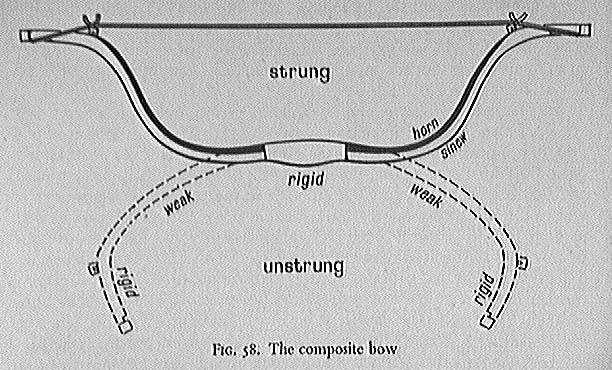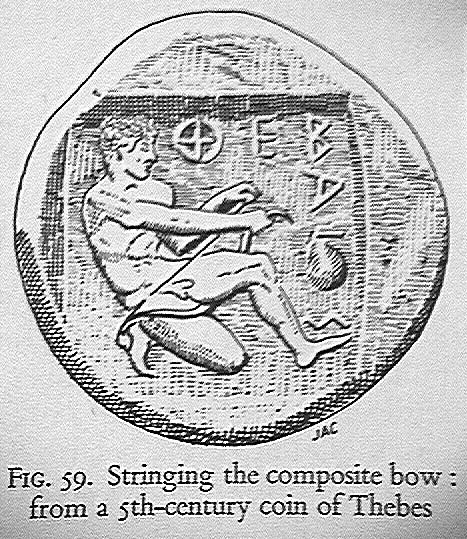Homer, The Odyssey, Books 22, 23, 24
Athena increasingly enters the plot of the epic in the later books, and
finally in Book 22, she appears to the Suitors in her own form, wielding the
shield of Zeus. The Aegis bears the Gorgon's head, won by Perseus in
battle, and it strikes terror in the hearts of all who see it. This is
Athena Nike or Athena Victorious, the battlefield manifestation of this
goddess of strategy, weaving, and guile.
Click here to see the famous
sculpture of Athena Nike known as the "Winged Victory of Samothrace."
If we continue to explore the Odyssey's use of the gods in an
Euhemeristic fashion, as representatives of abstract qualities and natural
forces, what might Athena's increasingly vivid presence mean for these
books?
The later books of the Odyssey also suddenly introduce us to the
narrative forms commonly found in the Iliad but rarely found in the
narrative of Odysseus' wanderings and homecoming. Most distinctive of
these are the death scenes of the suitors, which begin with clinically
precise descriptions of the death wound, the body's convulsive responses to
it, and the fall of the body to earth, usually with vivid auditory or visual
effects. In these late books, those images often are oddly ironic, as
when Antinous and Eurymakhos die with their blood defiling the food which
ought to have fed their blood. The maids' "dancing feet" also echo the
imagined dancing with the Suitors in their days of happy betrayal of
Penelope and Telemakhos.
A major part of this narrative
section's power is its rendering of archery in warfare. This is an
unusual feature of the Odyssey which will surprise readers of the
Iliad. According to later sources, Paris, Helen's cowardly
husband, uses a bow to kill Achilles, but its stand-off-and-kill technique
gives the warrior what might be considered an unfair advantage over even the
spear or javalin caster. In this situation, however, the unfair
advantage is more than compensated for by the suitors' numbers vs. Odysseus'
tiny war-band. Everything the poet
says Odysseus does with the bow is entirely plausible, and more astonishing
feats are possible. But first you have to string the bow.


Book 22--
1)
Note the order in which the suitors are killed.
How do the images associated with Antinoos' death summon up the poem's
previous thematic characterizations of the suitors' behavior?
Note the poet's sudden shift to Antinoos' perspective.
Why join the victim's point of view?
Also compare Eurymakhos' death.
2)
Once Odysseus has announced himself (compare with Clytemnestra to the
Chorus in Agamemnon), who is the first suitor to respond, why, and how
does he characterize the situation?
3)
What role does Melanthios play in the battle, and how would you
characterize it?
4)
How does Athena first intervene in the battle, and what does she do for
Odysseus (and for the reader) to put this battle in context?
5)
Note the extended simile in which Odysseus and his allies are described
as the suitors flee Athena's aegis (22: 337-346).
How does this relate to the poem's pattern of prophecy?
6)
When Agelaos, the seer, pleads for mercy, he charges that there is a
divine sanction for sparing him.
How would you explain it, and why doesn't Odysseus accept this as an adequate
reason?
7)
Who is saved in the hall, and why?
8)
With what extended simile are the suitors described as they lay dying in
Odysseus' hall? Where have we seen
a similar simile (or metaphor) used to describe this same type of scene?
9)
How do you explain the differences between the deaths of the
suitors and the deaths of the maids and the goatherd, Melanthios?
Book 23--
1)
How did Penelope react to Eurikleia's announcement of Odysseus' return
and the deaths of the suitors? Note
the patterns of formulaic language in the nurse's speech.
Also note Penelope's second response when she has been convinced.
2)
What are the customs of a Homeric-era town when a killing has occurred,
and how does Odysseus' plan to thwart these customs?
Note Phemios' role in this plan and its relationship to the "iron
wedding" theme.
3)
What is the key feature of Odysseus' bedroom, and why is this appropriate
for him?
4)
How does Penelope interpret Helen's behavior, and how might it shed light
on her behavior in Books 4 & 15?
5)
Once again we see the image of a swimmer in this narrative.
How is this used and how does it resonate with other
instances of swimmers saved?
(pp. 436-7, ll. 259-70)
6)
How does the narrator's summary recapitulation of Odysseus'
tale of his wanderings (told to Penelope) match your own memory
of the key events in the tale?
What is left out? What is
different about its narrative order?
What is its function at this
site?
7)
Apart from his expiation of the debt to Poseidon, what are Odysseus'
plans for the future and how do they shape your understanding of "business as
usual" in Ithaka?
Book 24--
1)
The suitors' arrival in the Underworld creates a loop to Book 11 and
introduces information about the lives and deaths of Achilles and Agamemnon.
What are they concerned about, and what do their deaths have to do with
the suitors and this plot?
2)
How does Amphimedon's version of the suitors' deaths compare with the
version previously given? What does
he emphasize? Also, can you detect
an inconsistency in the text's rules for entry into the Underworld here?
3)
When Odysseus confronts Laertes, how does Laertes discover
the truth about his identity?
Why does Odysseus force himself to watch his father's suffering?
4)
Who is Dolios and why is he introduced in this circumstance?
Why does Odysseus respond as he does to Dolios' questions about Penelope?
5)
How do the suitors' fathers interpret their deaths?
6)
What values are contained in the closing scene?
Is this true "closure," or
could the story go on? If so, how
might the singer continue it
tomorrow night?

